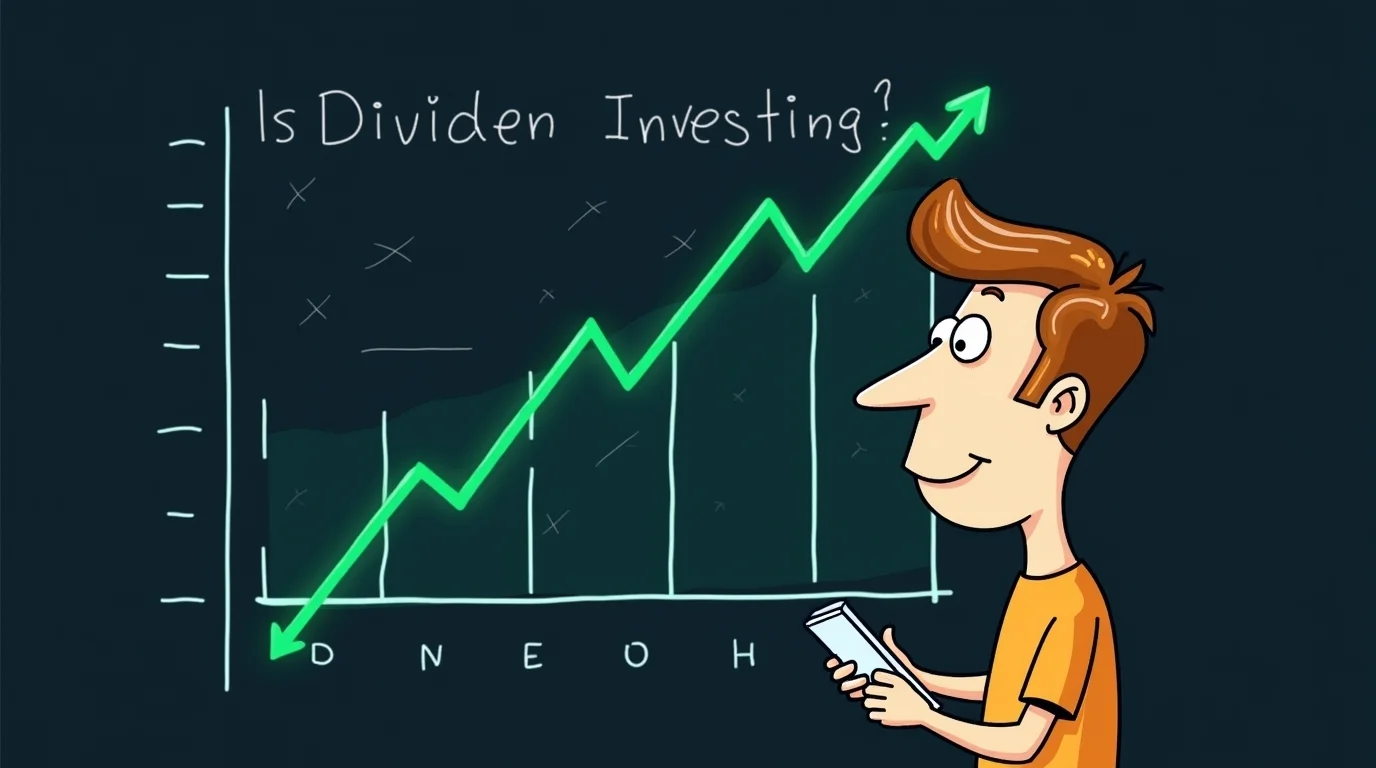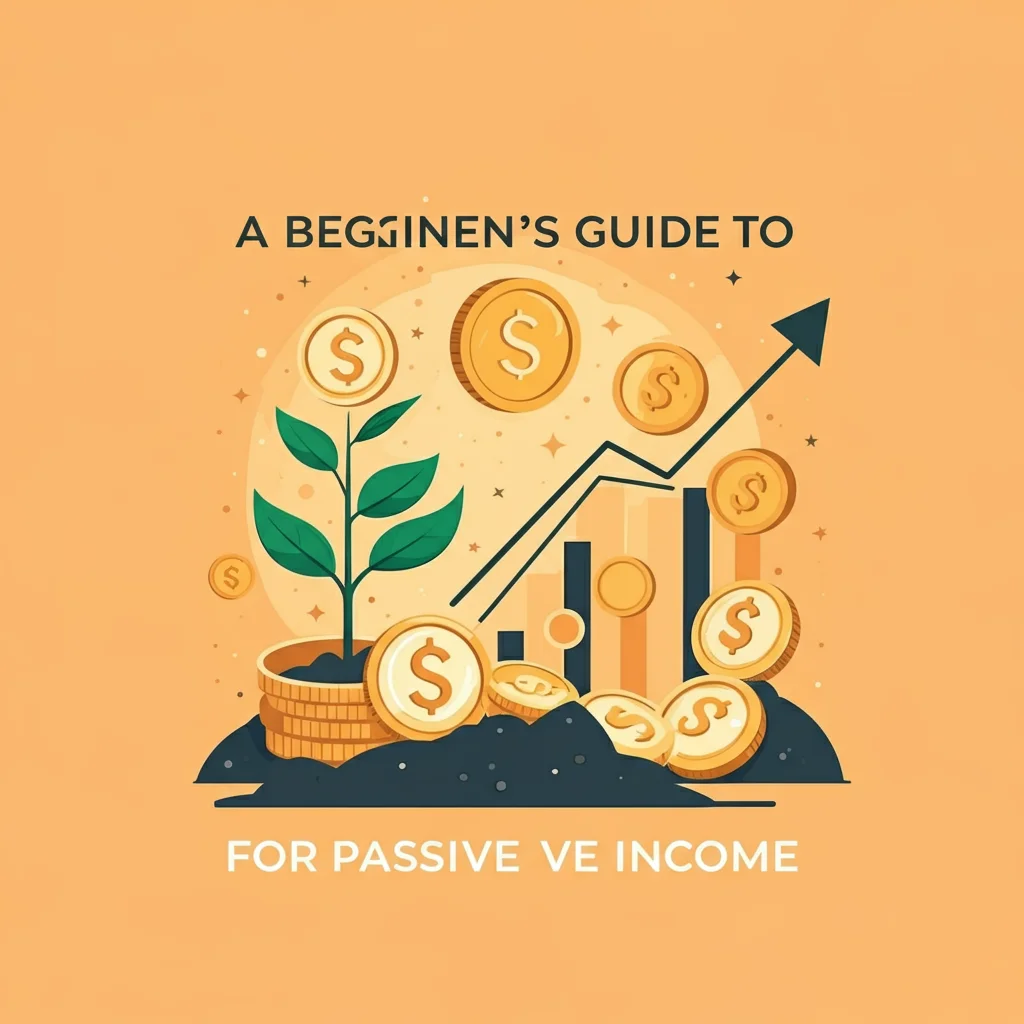Are you searching for a reliable, time-tested strategy to grow your wealth while simultaneously generating passive income? Dividend investing might just be the powerful approach you’ve been looking for. By strategically owning shares in companies that consistently pay out a portion of their profits, you can build a steady income stream that directly benefits you while also benefiting from the potential for long-term capital growth as the company's value increases. What's even better? Starting with a small, consistent initial investment can pave the way for remarkable and long-lasting financial success.
This comprehensive article will demystify the basics of dividend investing, guide you through how to choose the right dividend stocks, and unveil proven strategies you can use to increase your income significantly over time. Whether you're entirely new to the world of investing or an experienced individual seeking a more income-focused approach, this guide is designed to empower your financial journey.
Could you please explain what dividend investing is?
Dividend investing is a fundamental investment strategy where individuals buy shares (small ownership stakes) in companies that regularly distribute a portion of their earned profits back to their shareholders. These distributions are known as "dividends." Dividends are typically paid out on a recurring basis—most commonly quarterly (every three months)—providing investors with a consistent, predictable income stream that can arrive regardless of short-term market fluctuations.
When you own a small part of a profitable business, it shares some of its success with you in cash payments.
Why Should You Invest in Dividend Stocks? The Dual Benefits
Dividend investing offers two incredibly compelling benefits that make it a cornerstone for many successful portfolios:
Reliable Passive Income: By holding dividend-paying stocks, you establish a consistent income stream that requires no active work on your part. Once you've made the investment, the company does the work, and you receive the payouts. This characteristic makes it an exceptionally popular choice for income seekers, those planning for early retirement, or individuals looking to supplement their existing income.
Accelerated Wealth Growth: Many companies that consistently pay dividends are well-established, financially stable businesses with robust track records. This stability often means their stock prices tend to gradually increase over time (known as capital appreciation), providing a second layer of growth in addition to the direct income you receive. Even more powerfully, by reinvesting your dividends back into purchasing more shares of the same stock (or other stocks), you harness the exponential power of compounding. This means that your dividends purchase additional shares, and those new shares generate more dividends, which in turn buy even more shares, significantly accelerating your portfolio's growth over the long term.
The Basics of Getting Started with Dividend Investing
Embarking on your dividend investing journey is straightforward once you understand a few core concepts.
Step 1: Understand Essential Dividend Terminology
Before you dive in, it’s crucial to familiarize yourself with these key terms that are fundamental to assessing and choosing dividend stocks:
Dividend Yield: This is a crucial metric, representing the annual dividend payment expressed as a percentage of the stock's current price. It helps you compare the income potential of different stocks.
Calculation: (Annual Dividend Per Share / Current Stock Price Per Share) * 100%
Example: If a stock pays $2 per share annually in dividends and its current price is $50 per share, the dividend yield is ($2 / $50) * 100% = 4%.
The Payout Ratio represents the proportion of a company's earnings allocated to shareholders as dividends. It’s a vital sign of a dividend's sustainability.
Calculation: (Annual Dividends Per Share / Earnings Per Share) * 100%
Interpretation: A safe and sustainable payout ratio is generally considered to be 60% or lower. This means the company is retaining at least 40% of its earnings for reinvestment in growth, paying down debt, or building a cash reserve, making the dividend more secure and less likely to be cut. A payout ratio significantly higher than 70%–80% might signal that the dividend is unsustainable.
Ex-Dividend Date: This is a critical date for receiving payouts. To qualify for the upcoming dividend payment, you must purchase the stock before its ex-dividend date. If you buy the stock on or after this date, the seller (who held the stock before the ex-dividend date) will receive the next dividend payment. This date is usually set a few business days before the "record date" (when the company identifies shareholders).
Dividend Aristocrat/Dividend King: These terms refer to elite groups of companies with exceptionally long histories of increasing their dividends. Dividend Aristocrats have increased payouts for at least 25 consecutive years, while Dividend Kings have done so for 50+ consecutive years. These are often considered highly reliable dividend payers.
Step 2: Set Clear Investment Goals

Before you begin selecting stocks, clearly define why you are investing and what you hope to achieve. Your goals will profoundly influence your investment approach. For example:
Short-term goals (e.g., supplementing current income, covering monthly expenses): You might prioritize stocks with higher current dividend yields to maximize immediate income. However, be cautious of unsustainably high yields (see "Reasonable Yield" below).
When considering long-term goals, such as retirement planning, financial independence, and accelerated wealth growth, your focus will likely shift to dividend growth. Your focus will likely shift to dividend growth. Prioritize companies that consistently increase their payouts year after year, even if their initial yield is modest. This strategy harnesses the power of compounding and inflation protection.
Step 3: Choose a Reputable Brokerage Account
To begin buying stocks, you'll need to open a brokerage account. Fortunately, many excellent platforms cater specifically to beginners and offer commission-free trading for stocks and ETFs (exchange-traded funds).
What to Look For:
Low Fees/Commission-Free Trading: This is standard for stock trades today.
User-Friendly Interface: Look for an intuitive platform that makes buying and selling straightforward.
Educational Resources: Many top brokers offer articles, tutorials, and research tools that are invaluable for new investors.
Dividend Reinvestment Plans (DRIPs): Confirm the broker offers automatic dividend reinvestment, a powerful feature for compounding.
Popular Options (for research, not direct endorsement): Often recommended for their robust offerings and educational support are platforms such as Fidelity, Charles Schwab, Vanguard, or E*TRADE. Research their specific features and fee structures to find the best fit for you.
How to Choose the Right Dividend Stocks: Smart Selection for Sustainable Income

Not all dividend stocks are created equal. A careful selection process is vital for building a resilient, income-generating portfolio. Here’s what to prioritize:
Reliable Dividend History (Consistency is Key):
Focus: Seek companies with a long and consistent track record of not just paying but also increasing their dividends year after year. These companies demonstrate financial discipline and a commitment to shareholder returns.
"Dividend Aristocrats" & "Dividend Kings": These are excellent starting points. Companies like Procter & Gamble, Coca-Cola, Johnson & Johnson, or 3M have increased payouts for decades, signaling extreme stability and reliability through various economic cycles.
Avoid companies with erratic dividend histories or recent dividend cuts, as this can be a red flag.
Strong Financial Health (Sustainability Check):
Focus: A company’s ability to sustain (and grow) its dividend payments hinges entirely on its underlying financial health.
What to Check: Look for businesses with:
Steady Revenue Growth: Consistently increasing sales.
Positive and Growing Earnings: The company is making more profit over time.
Manageable Debt Levels: Low debt-to-equity ratios or reasonable debt compared to their cash flow.
Healthy Free Cash Flow: Sufficient cash generated from operations after accounting for capital expenditures—this is the cash available for dividends, share buybacks, or reinvestment.
Tools: Most brokerage platforms provide access to a company's financial statements (income statement, balance sheet, cash flow statement) and financial ratios.
Sustainable Business Sectors (Long-Term Demand):
Focus: Invest in industries with lasting, consistent demand for their products or services, regardless of economic ups and downs. These sectors tend to generate more stable earnings, which supports stable dividends.
Examples:
Consumer Staples: Companies producing everyday necessities (food, beverages, household goods, personal care products like Procter & Gamble, Coca-Cola, and PepsiCo). People buy these even in recessions.
Healthcare: Pharmaceutical companies, medical device manufacturers, and healthcare service providers (like Johnson & Johnson and Pfizer). Healthcare demand is relatively inelastic.
Utilities: Electric, gas, and water companies (like NextEra Energy and Duke Energy). These provide essential services and often operate as regulated monopolies.
Telecommunications: Companies providing internet and mobile services (like Verizon and AT&T).
Steer clear of highly cyclical industries such as auto manufacturing or airlines, as their profits can fluctuate significantly due to economic conditions, thereby reducing the reliability of dividend payments.
Reasonable Dividend Yield (Beware of "Yield Traps"):
Focus: While a high yield is attractive, don't chase it blindly. An unusually high dividend yield (e.g., 8% or more) can often signal underlying financial trouble, suggesting the stock price has dropped significantly while the dividend has not yet been cut. These are known as "yield traps."
"Sweet Spot": For quality, stable companies, a "sweet spot" yield is typically in the 2–5% range. This indicates a healthy balance between income and potential for capital appreciation and often suggests the dividend is sustainable.
How to Check: Always cross-reference a high yield with the company's payout ratio and financial health.
Evidence of Dividend Growth (The Power of Compounding Income):
Focus: Even if a stock starts with a modest yield, prioritize companies that consistently grow their dividends over time. This is arguably more important than a high initial yield for long-term investors.
Why it Matters: Steady annual increases (even 5-10% per year) can significantly boost your income in the long run and help combat inflation. A company that consistently increases its dividend is demonstrating confidence in its future earnings and commitment to shareholders.
Strategies to Grow Your Dividend Income Over Time
Once you've selected your dividend stocks, these strategies will help you accelerate your passive income growth:
Reinvest Dividends (DRIPs):
How it Works: Many brokerage firms offer Dividend Reinvestment Plans (DRIPs). This invaluable feature automatically uses your dividend payouts to purchase additional shares (or fractional shares) of the same company.
Benefit: This option option harnesses the power of compounding. Each dividend payment buys more shares, which in turn generate even more dividends, creating an exponential growth effect on your income stream and overall portfolio value over time. This strategy truly generates profits.
Diversify Your Portfolio Broadly:
Why It's Crucial: Avoid concentrating all of your assets in a single investment. Diversification is key to managing risk.
How to Diversify: Spread your investments across
Different Industries/Sectors: Hold stocks in various sectors (e.g., tech, healthcare, consumer staples, utilities, industrials) so that if one sector faces headwinds, others might perform well.
Different Company Sizes: Include a mix of large-cap (established giants), mid-cap, and potentially small-cap companies.
Different Geographic Regions: While this guide focuses on individual stocks, consider global diversification over time through ETFs.
Goal: A well-diversified portfolio helps reduce the impact of any single stock underperforming or cutting its dividend.
Monitor and Adjust Your Portfolio Periodically:
How Often: You don't need to check daily, but review your portfolio periodically (e.g., quarterly or semi-annually).
What to Look For:
Align with Goals: Ensure your holdings still align with your long-term goals.
Monitor the financial health of your companies. Look for any signs of fundamental deterioration that could signal a potential dividend cut (e.g., consistently falling revenue, rising debt, or a payout ratio creeping too high).
Rebalance: Over time, some stocks may grow more than others. Rebalance your portfolio to maintain your desired asset allocation (e.g., if one sector becomes too large a percentage, trim it back and reinvest in underrepresented sectors).
The Risks of Dividend Investing (and How to Handle Them)
While dividend investing is generally considered a more conservative and lower-risk strategy compared to pure growth investing, it's not entirely without challenges. Understanding and mitigating these risks is vital for successful long-term investing.
Dividend Cuts: This is the primary risk. Companies facing significant financial troubles, unexpected economic downturns, or major shifts in their business strategy may reduce or suspend their dividends.
Mitigation: Prioritize companies with a low payout ratio (ideally below 60%), strong financial fundamentals, consistent cash flow, and a long history of increasing dividends. Diversification also protects you from the impact of a single cut.
Market Volatility: Stock prices can fluctuate significantly due to broader market conditions, economic news, or investor sentiment.
Mitigation: Remember that your primary focus with dividend investing is the consistent income stream, not short-term price movements. Try not to react to daily market noise. Focus on the underlying business and its ability to continue paying and growing its dividend. In fact, market dips can be opportunities to buy more shares at a lower price, thus increasing your yield on cost.
Inflation Risks: Over long periods, inflation can erode the purchasing power of your dividend income.
Mitigation: Combat this by consistently reinvesting dividends (compounding your shares) and, crucially, by selecting companies with a strong history of growing their payouts annually. These dividend growth stocks help your income keep pace with or even outpace inflation.
Is Dividend Investing Right for You?

Dividend investing is not a scheme that promises instant wealth. It requires patience, discipline, and a long-term perspective. However, it is an exceptionally robust strategy for those seeking
Consistent Income: A reliable stream of cash flow directly deposited into your account.
Long-Term Wealth Growth: The benefit of capital appreciation combined with compounding dividends.
Financial Security & Peace of Mind: The stability of investing in financially sound companies.
Whether you're a novice investor with a limited budget, or someone nearing retirement who wants to transform their savings into a steady income stream, dividend-paying stocks can offer significant financial security and a sense of security.
If you’re ready to start building passive income, begin with small, manageable investments and focus on continuously learning as you go. Remember, consistency (regular investing) and patience (allowing compounding to work) are your greatest tools in dividend investing.
Start Your Dividend Journey Today!
Dividend investing is all about strategically planting financial seeds today to cultivate a bountiful financial future. By selecting the right dividend stocks based on solid fundamentals, diligently reinvesting your payouts, and sticking to a disciplined long-term strategy, you can create a portfolio that generates steady, growing passive income for many years, even decades, to come.
Are you still uncertain about how to take that crucial first step? Don't let paralysis by analysis hold you back. Begin by exploring reputable dividend investment platforms, utilizing their educational resources, or consider speaking with a qualified financial advisor who can help tailor a plan to your specific goals. The sooner you start, the sooner you can benefit from the incredible rewards of this proven investment strategy.



